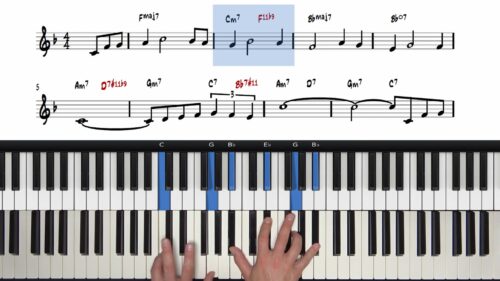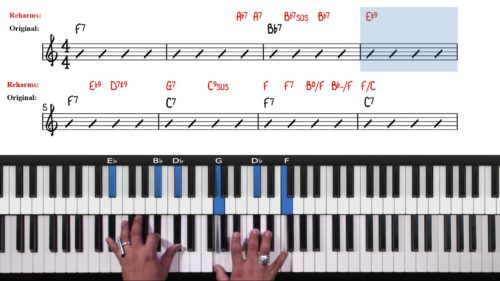Chromatic Passing Chords in Slow Blues
In this lesson we add chromatic passing chords into the 12-bar blues progression in the key of C. Chromatic passing chords add tension, colour, and strengthen the sense of resolution when changing chords.
We explore how and where to seamlessly integrate passing chords into our 12 bar blues performances.
Adding Passing Chords in 12-Bar Blues
Chromatic passing chords are particularly effective to enhance the transitions between the primary chords in the blues progression which are the 1 chord, the IV chord, and the V chord. Passing chords create brief moments of tension and dissonance which is then resolved as we move into the next bar.
Starting from the top of the form we add various passing chords into the 12-bar blues progression. Our first opportunity is to use a passing chord in the first bar of C7 which sets up a smooth transition to the F7 in the 2nd bar.
We also introduce a G7#5 passing chord in the 3rd bar. Whilst this is not a chromatic passing chord, it serves a similar function. In bar 3 the primary chord is C7 and G7#5 is the respective dominant 7 chord. The addition of the #5 alteration functions as a leading tone which pulls us back to the 3rd of C7 in the 4th bar.
We continue to work through the rest of the form identifying passing chord opportunities.
Passing Chord Voicing Options
We demonstrate different voicing options for each passing chord and identify that there are usually multiple voicings that can work for any given passing chord.
When choosing voicings for passing chords, it’s important to focus on clean voice leading and smooth transitions from the passing chord to the target chord to achieve a polished and professional sound.
Practice Tips
-
Target Specific Notes: Focus on targeting specific notes after the passing chords, such as the 3rd, 7th, or 9th. This creates smooth transitions and maintains a cohesive sound.
-
Explore Different Voicings: Practice various voicings for each passing chord, experimenting with different inversions and positions on the keyboard.
- UST Voicings: Passing chords can also be voices as Upper Structure Triad voicings. See the related lessons above for more information.






